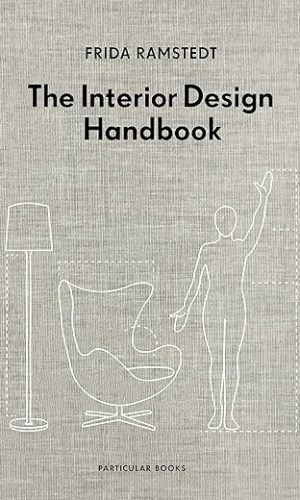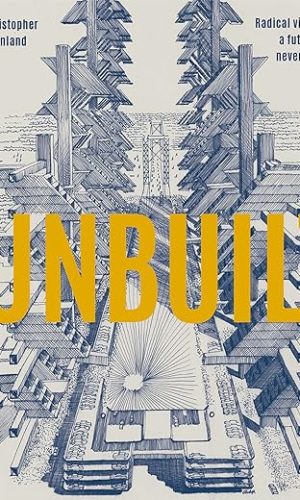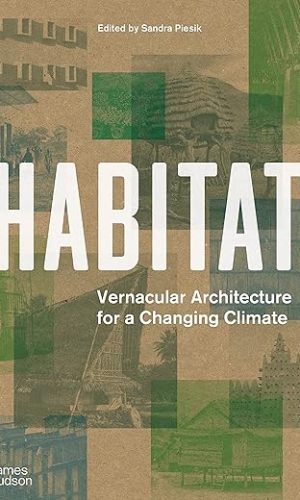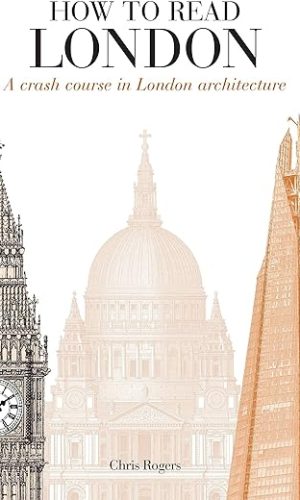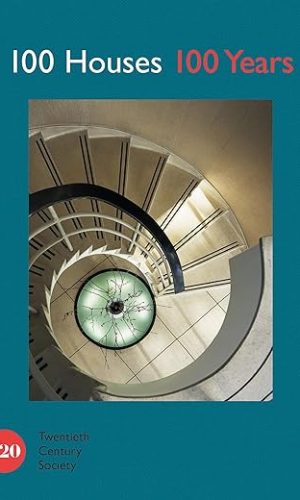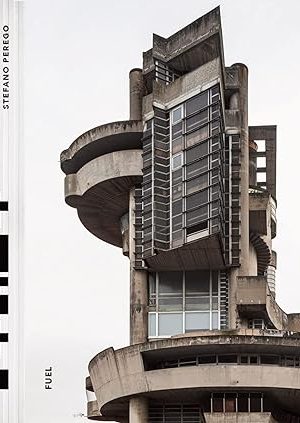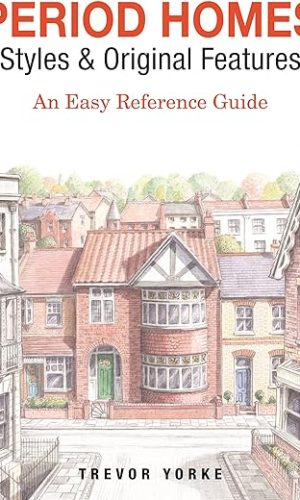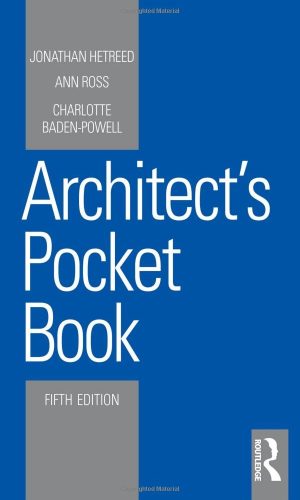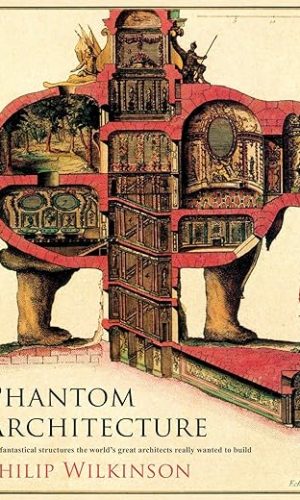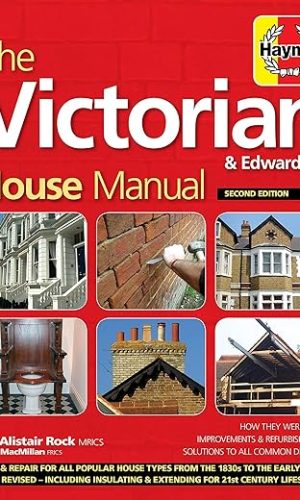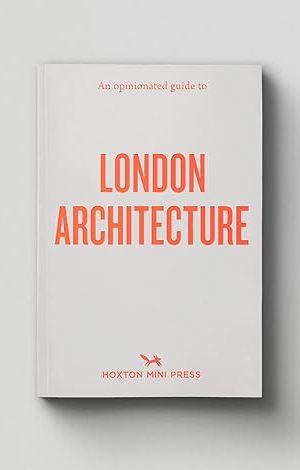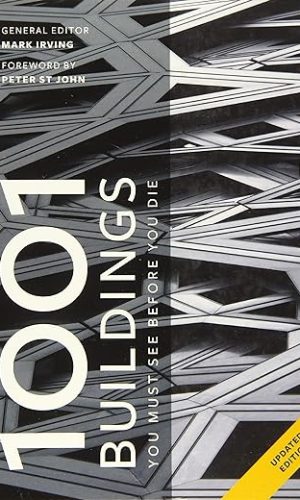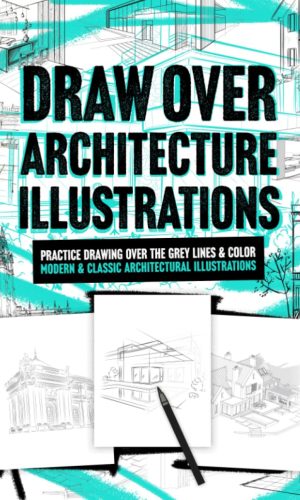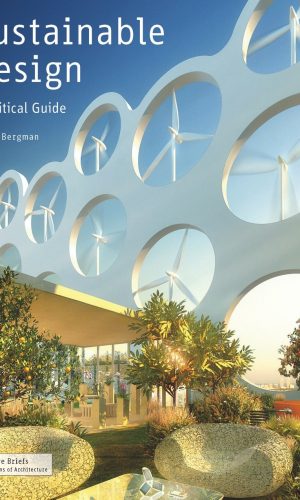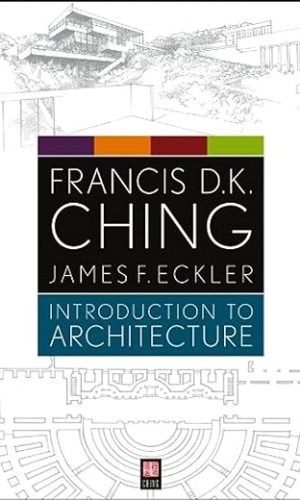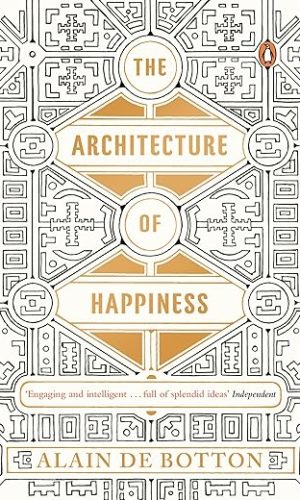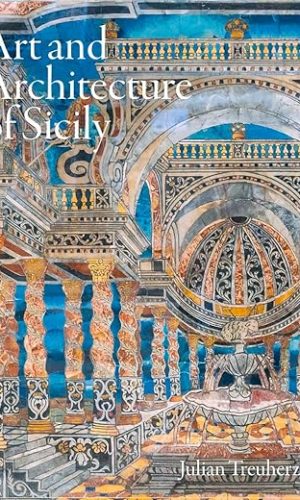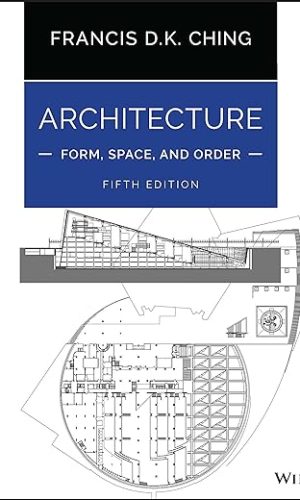Architecture
-
The Times Cricket Grounds of the World
From the history-steeped ‘home of cricket’ at Lord’s, to the mecca of Indian cricket at Eden Gardens, this encompassing guide ranges across five continents and brings you the best cricket venues the world has to offer.
Accompanied by corresponding articles from The Times of notable matches at each venue, discover the history behind these remarkable grounds. With its beautiful, full-colour photography, scorecards, and locator map, this is an essential book for all fans of cricket.
Grounds include:
- Adelaide Oval, Australia
- Bangabandhu National Stadium, Bangladesh
- Centurion Park, South Africa
- Dubai International Cricket Stadium, United Arab Emirates
- Eden Gardens, India
- Eden Park, New Zealand
- Edgbaston, England
- Galle International Stadium, Sri Lanka
- Harare Sports Ground, Zimbabwe
- Iqbal Stadium, Pakistan
- Kensington Oval, Barbados
- Lord’s, England
- Melbourne Cricket Ground, Australia
- Newlands, South Africa
- The Oval, England
- St John’s, Antigua
Read more
£19.00£23.80The Times Cricket Grounds of the World
£19.00£23.80 -
Britain’s Landmarks and Legends: The Fascinating Stories Embedded in our Landscape (National Trust)
Discover the history, legends and folklore of Britain’s most intriguing landmarks
This beautifully illustrated book reveals the secrets and stories of fifty icons of Britain’s landscape.
Some are natural wonders, such as Cheddar Gorge, Sherwood Forest and the white cliffs of Dover. Others were made by our distant ancestors: the standing stones of Avebury and Calanais, the Uffington White Horse, the burial mounds of Sutton Hoo.
Discover how they came to be, the legends and traditions that surround them, and how they have inspired famous writers and poets. Reconnect with our ancient landscape with this fascinating and surprising guide.
.
Read more
£10.40£12.30 -
About Architecture: An Essential Guide in 55 Buildings
Hugh Pearman deftly guides us through the compelling stories of fifty-five buildings that explain our world, from antiquity to the present day
About Architecture is an engaging introduction to architecture, exploring the ways in which we construct our built environment, and why. Hugh Pearman guides us through the architecture that shapes our lives―from how our towns and cities are organized, to where we live, learn and work, and how we get around, interact with others, and relax. Organized by type―from civic spaces, to homes, offices, and museums―the clear and straightforward structure demystifies the many styles and functions of architecture. Pearman explores how architecture responds to our changing lifestyles and how some buildings evolve or find new uses. He demonstrates that while there is endless variety within each building type, the essence of architecture―the way buildings serve their users―remains surprisingly constant.
Through fifty-five fascinating international examples, from antiquity to the present day, About Architecture reveals the intriguing stories of the buildings that explain our world.Read more
£22.60£28.50 -
Contemporary Japanese Architecture
Japan’s contemporary architecture has long been among the most inventive in the world, recognized for sustainability and infinite creativity. No fewer than eight Japanese architects have won the Pritzker Prize.Since Osaka World Expo ’70 highlighted contemporary forms, Japan has been a key player in global architecture. Tadao Ando’s geometry put Japanese building on the map, bridging East and West. After his concrete buildings, figures like Kengo Kuma, Shigeru Ban, and Kazuyo Sejima pioneered a more sustainable approach. Younger generations have taken new directions, in harmony with nature, traditional building, and an endless search for forms.Presenting the latest in Japanese building, this book links this unique creativity to Japan’s high population density, modern economy, long history, and continual disasters in the form of earthquakes. Accepting ambiguity, constant change, and catastrophe is a key to understanding how Japanese architecture differs from that of Europe or America.Derived from the XL-sized book, this affordable edition highlights 37 architects and 53 exceptional projects by Japanese masters—from Tadao Ando’s Shanghai Poly Theater, Shigeru Ban’s concert hall La Seine Musical, SANAA’s Grace Farms, Fumihiko Maki’s 4 World Trade Center to Takashi Suo’s much smaller sustainable dental clinic. An elaborate essay traces the building scene from the Metabolists to today, showing how the interaction of past, present, and future has earned contemporary Japanese architecture worldwide recognition.
Read more
£22.90 -
The Interior Design Handbook
THE BESTSELLING SWEDISH PHENOMENON
What looks good and why?
Design consultant Frida Ramstedt runs Scandinavia’s leading interior design blog. In this book she distils the secrets of successful interior design and styling to help you create a home that works best for your space, taste and lifestyle. Filled with practical tips, rules-of-thumb and tricks of the trade, The Interior Design Handbook will help you to think like a professional designer.
‘Frida has created this BIBLE to interior design … such useful info that has taken me years to learn, all in one place’ Rebecca Wakefield, Studio Fortnum
‘Beautifully illustrated with handy line drawings … The Interior Design Handbook gets down to the nitty gritty of successfully putting a room together’ Fabric Magazine
‘Take it to bed and you’ll be utterly engrossed and elightened’ Stylist
Read more
£18.30£23.80The Interior Design Handbook
£18.30£23.80 -
Architecture Drawing Book: 120 Drawing Sketchbook To Write Your Design, Ideas, Notes, Memories, Goals, And More. ( Architecture Tools )
This book for Architects and designers, contains 120 pieces of graph paper to write your design ideas, notes, memories, goals, and more.
Perfect for both professionals and architecture students.Features:
✔ Large format
✔ Printed on High quality paper
✔ glossy paperback coverRead more
£4.70 -
Unbuilt: Radical visions of a future that never arrived
Unbuilt tells the stories of the plans, drawings and proposals that emerged during the 20th century in an unparalleled era of optimism in architecture.
Many of these grand projects stayed on the drawing board, some were flights of fancy that couldn’t be built, and in other cases test structures or parts of buildings did emerge in the real world. The book features the work of Buckminster Fuller, Geoffrey Bawa, Le Corbusier, Frank Lloyd Wright and Archigram, as well as contemporary architects such as Norman Foster, Zaha Hadid, Will Alsop and Rem Koolhaas.
Richly illustrated with photographs, drawings, maps, collages and models from all over the world, it covers everything from Buckminster Fuller’s plan for a ‘Domed city’ in Manhattan to Le Corbusier’s utopian dream of skyscraper living in central Paris, from a proposed network of motorways ploughing through central London to a crazy-looking scheme for ‘rolling pavements’ in post-war Berlin.
This is an important book, not just for the rich stories of what might have been in our built world, but also to give understanding to the motivations and dreams of architects, sometimes to build a better world, but sometimes to pander to egos. It includes plans that pushed the boundaries – from plug-in cities, moving cities, space cities, domes and floating cities to Maglev, teleportation and rockets. Many ideas were just ahead of their time, and some, thankfully, we were always better without.
Read more
£19.00£23.80 -
Habitat: Vernacular Architecture for a Changing Climate
A compact edition of this landmark publication, which celebrates humanity’s ability to create buildings that for millennia have responded ingeniously to cultural and environmental conditions.There has never been a more important time to understand how to make the best use of local natural resources and create buildings that do not rely on stripping our planet or transporting materials across the globe. First published in 2017, this major book gathers together the world’s leading experts on vernacular architecture to examine how local buildings have stood the test of time and offer lessons for the future.
The core of the book is arranged by climate zone, from desert to tropical, temperate to arctic. Within each section, buildings are presented regionally, showing how climatic conditions and vegetation affect the evolution of building styles. This central part is bookended by a range of essays exploring the economic and anthropological aspects, while the reference section offers information on materials science and engineering, including how buildings have been adapted to contend with natural disasters.
The traditions of vernacular architecture have much to teach us. Given our ecosystem’s increasing frailty, the architecture and building trade’s new role in a post-digital era, and the desperate need to record fading cultural traditions, the relevance of this book is greater than ever.
Read more
£34.10£47.50 -
How to Read London: A crash course in London Architecture
Over 2,000 years of settlement give London its unique architectural heritage. Unlike Haussmann’s Paris, neither monarch nor politician imposed their will; private ownership and enterprise shaped the city and defined its parts. Elegant West End squares and crescents hallmark the Classical townscape that emerged between 1600 and 1830, but medieval, Tudor and Victorian enclaves identified by occupation, class or guild make their own design statement, notably in the City and East End. From its renewal after the Great Fire of 1666 as a centre of commerce, culture, finance and as a railway hub, the seat of power and law, How to Read London reveals through the built environment how London’s domestic, civic and commercial landscape has evolved and adapted from imperial capital to global city.Read more
£7.30£9.50 -
100 Houses 100 Years
A fascinating insight into Britain’s built heritage and the diverse housing styles of the twentieth and twenty-first century. This book showcases 100 houses – one from each year from 1914 – that represent the range of architectural styles throughout the years and show how housing has adapted to suit urban life. Each house is accompanied by stunning photography and texts written by leading architectural critics and design historians, including Gavin Stamp, Elain Harwood, Barnabas Calder, Ellis Woodman and Gillian Darley.
From specially commissioned architect-designed houses for individuals and for families to housing built for increased workforces, each of the 100 houses brings a different design style or historical story. There are houses built as part of garden cities, semi-detached suburban houses, housing estates, eco-houses, almshouses, converted factories and affordable post-war homes. The architectural styles encompass mock Tudor, modernist, Arts & Crafts and brutalist and the featured architects include Giles Gilbert Scott, Walter Gropius, Edwin Lutyens, Powell and Moya and David Chipperfield.
The book also contains essays that explore the social and political aspects of housing design in Britain over the last 100 years, looking at the impact the World Wars had on housing, exploring domestic technology and building materials and asking how the modern house came about.
Whether exploring Grayson Perry’s folly-like House for Essex, Patrick Gwynne’s modernist glass villa in Surrey, Sarah Wigglesworth’s Straw Bale House or Simon Conder’s black rubber-clad fisherman’s hut in Dungeness, this book gives a glimpse into the wonderful housing in Britain and is a must-have for all fans of design history and architecture.
Read more
£9.50£23.80100 Houses 100 Years
£9.50£23.80 -
Brutalist Italy: Concrete architecture from the Alps to the Mediterranean Sea
Containing over 140 exclusive photographs – ranging from private homes to football stadia – across every region of the country, Brutalist Italy is the first publication to focus entirely on this subject.‘Brutalist Italian architecture enthusiasts and concrete completists will be spoilt for choice by Roberto Conte and Stefano Perego’s pictorial tour.’ – Wallpaper*
What makes Italian Brutalist buildings different to their counterparts in other countries? Containing over 140 exclusive photographs – ranging from private homes to churches and cemeteries via football stadia – across every region of the country, Brutalist Italy is the first publication to focus entirely on this subject.
Architectural photographers Roberto Conte and Stefano Perego (authors of Soviet Asia) have spent the past five years travelling over 20,000 kilometres documenting the monumental concrete structures of their native country.
Brutalism – with its minimalist aesthetic, favouring raw materials and structural elements over decorative design – has a complex relationship with Italian history. After World War II, Italian architects were keen to distance themselves from fascism, without rejecting the architectural modernism that had flourished during that era. They developed a form of contemporary architecture that engaged with traditional methods and materials, drawing on uncontaminated historical references. This plurality of pasts assimilated into new constructions is a recurring feature of the country’s Brutalist buildings, imparting to them a unique identity.
From the imposing social housing of Le Vele di Scampia to the celestial Our Lady of Tears Sanctuary, Syracuse – Brutalist Italy collects the most compelling examples of this extraordinary architecture for the first time in a single volume.
The book is dual language, with texts in both English and Italian.
Read more
£18.70£25.60 -
Traditional Japanese Architecture: An Exploration of Elements and Forms
By examining the Japanese history of buildings and building designs from prehistory to modern day, lovers of Japan will develop a deeper understanding and appreciation of this island country.Simplicity, sensitivity to the natural environment, and the use of natural materials are the hallmarks of Japanese architecture. The Art of Japanese Architecture provides a broad overview of traditional Japanese architecture in its historical and cultural context. It begins with a discussion of prehistoric dwellings and concludes with a description of modern Japanese buildings. Important historical influences and trends–notably the introduction of Buddhist culture from Korea and China, the development of feudalism, and the influence of modern Western styles of building–are all discussed in detail as facets of Japanese design.
Through all of these changes, a restrained architectural tradition developed in marked contrast to an exuberant tradition characterized by monumentality and the use of bold colors. The book provides tremendous insights into the dynamic nature of Japanese architecture and how it reflects an underlying diversity within Japanese culture.
The book is profusely illustrated with over 370 color photographs, woodblock prints, maps, diagrams, and specially commissioned watercolors.
Read more
£16.70 -
Period Homes – Styles & Original Features: An Easy Reference Guide (Britain’s Architectural History)
Are you ready to step inside the world of period homes? To unlock the secrets of the iconic buildings we see throughout the cities, towns and villages of Britain? Then this is the book for you.
Combining detailed illustrations and Trevor Yorke’s trademark easy-to-read explanations, this book reveals everything you need to know about these fascinating buildings.
Period houses might be all around us, but sometimes it’s hard to know exactly which features to look at in order to date them. Or what to look for if you need to replace an original fitting.
This book aims to help the reader recognise the common architectural styles and original features from each period, whether they just want to find out more about a particular property, or are trying to restore one.
If you’re in the middle of renovating a period home, for example, and you want to know which original window style you should be installing, you’ll find it here.
All styles and periods are covered – from graceful Regency terraces with elegant iron balconies and muscular Victorian houses with colourful stained glass, to Edwardian homes with white patterned timber work, and stylish 1930s semis with curved suntrap windows. From glasswork and doors to fireplaces and floors (plus everything in between) this is a treasure trove of information about the British period homes we love.
CONTENTS
- Introduction
- Chapter 1: HOUSE STYLES – From Neoclassical to Art Deco
- Chapter 2: WINDOWS – Sashes, Casements & Coloured Glass
- Chapter 3: DOORS – Panels, Stained Glass & Knobs
- Chapter 4: EXTERIOR FITTINGS – Railings, Bargeboards & Guttering
- Chapter 5: INTERIOR STYLES – Adam Style to Art Deco
- Chapter 6: HEAT & LIGHT – Fireplaces, Ranges & Lamps
- Chapter 7: WASHING & BATHING – Sinks, Baths & Toilets
- Chapter 8: INTERIOR FITTINGS – Stairs, Doors & Floors
- Places to Visit
- Glossary
Read more
£5.70 -
Brutal North: Post-War Modernist Architecture in the North of England
BRUTAL NORTH offers the first photographic exploration of modernist and Brutalist architecture across the North of England.
During the post-war years the North of England saw the building of some of the most aspirational, enlightened and successful modernist architecture in the world. For the first time, a single photographic book captures those buildings, in all their power and progressive ambition.
Over the last few years acclaimed photographer Simon Phipps has travelled and sought out the publicly commissioned architecture of the post-war North. From Newcastle’s Byker Wall Estate, voted the best neighbourhood in the UK, to the extraordinary Park Hill Estate in Sheffield, from Preston’s sweeping bus station and Liverpool’s Royal Insurance Building, these structures have seen off threats to their survival and are rightly celebrated for the imprint they leave upon the skyline and the cultural life of their cities.
This inspiring invitation to explore northern modernism includes maps and detailed information about all the architecture photographed.
Read more
£14.20£17.10 -
Architect’s Pocket Book (Routledge Pocket Books)
This handy pocket book brings together a wealth of useful information that architects need on a daily basis – on-site or in the studio. It provides clear guidance and invaluable detail on a wide range of issues, from planning policy through environmental design to complying with Building Regulations, from structural and services matters to materials characteristics and detailing. This fifth edition includes the updating of regulations, standards and sources across a wide range of topics.
Compact and easy to use, the Architect’s Pocket Book has sold well over 90,000 copies to the nation’s architects, architecture students, designers and construction professionals who do not have an architectural background but need to understand the basics, fast.
This is the famous little blue book that you can’t afford to be without.
Read more
£23.80£30.40Architect’s Pocket Book (Routledge Pocket Books)
£23.80£30.40 -
Phantom Architecture
’60 fantastical structures described and illustrated in this colourful and highly entertaining book.’ The Sunday Times
‘If you can’t think of a present for the armchair architect in your life – well, problem solved’ The Daily Telegraph
‘These ghostly architectural echoes entrance the reader.’ The Field
‘This is a lavishly illustrated book of wonder for the dreamer in your life’ The Metro
A skyscraper one mile high, a dome covering most of downtown Manhattan, a triumphal arch in the form of an elephant: some of the most exciting buildings in the history of architecture are the ones that never got built.
These are the projects in which architects took materials to the limits, explored challenging new ideas, defied conventions, and pointed the way towards the future. Some of them are architectural masterpieces, some simply delightful flights of fancy. It was not usually poor design that stymied them – politics, inadequate funding, or a client who chose a ‘safe’ option rather than a daring vision were all things that could stop a project leaving the drawing board.
These unbuilt buildings include the grand projects that acted as architectural calling cards, experimental designs that stretch technology, visions for the future of the city, and articles of architectural faith. Structures likeBuckminster Fuller’s dome over New York or Frank Lloyd Wright’s mile-high tower can seem impossibly daring. But they also point to buildings that came decades later, to the Eden Project and the Shard.
Some of those unbuilt wonders are buildings of great beauty and individual form like Etienne-Louis Boullée’s enormous spherical monument to Isaac Newton; some, such as the city plans of Le Corbusier, seem to want to teach us how to live; some, like El Lissitsky’s ‘horizontal skyscrapers’ and Gaudí’s curvaceous New York hotel, turn architectural convention upside-down; some, such as Archigram’s Walking City and Plug-in City, are bizarre and inspiring by turns. All are captured in this magnificently illustrated book.
Read more
£7.60£23.80Phantom Architecture
£7.60£23.80 -
The Victorian House Manual (2nd Edition): How They Were Built, Improvements & Refurbishment, Solutions to All Common Defects – Includes Relevant … … Care and repair for this…
Thinking of buying a Victorian or Edwardian house? Or maybe you already own one? Either way, this clearly written manual explains all you need to know about the care and repair of these classic properties. Today, many houses of this age are in need of extensive updating and maintenance, having suffered years of neglect. Some have been damaged by misguided home improvements or botched repairs using the wrong materials. Even newly refurbished properties can sometimes conceal dangerous structural alterations and shoddy build-quality. This unique manual provides detailed, expert advice, backed up with clear how to colour photographs, describing where to check for the critical danger signs and how to fix all common defects. Each chapter is devoted to a key part of the house in the style of a professional home survey, guiding you safely through the whole building. The author also investigates potential dangers from subsidence, damp, beetle infestation, fungal decay, lead paint, lead pipes, asbestos and toxic mould . Every old house has a story to tell, and one of the joys of owning a valuable antique building is discovering its history stripping back modern finishes to reveal long lost original features. So the manual also includes a wealth of fascinating information about 19th & early 20th century houses everything from the immeasurable contribution made by Victorian toilet pioneers such as the legendary Thomas Crapper, to why horse hair and dung were common ingredients in building materials. Coming right up to date, the book shows the best ways to upgrade and extend your home for 21st century lifestyles, and reveals which improvements add real value and the ones to avoid. * Discover how your house was built its age, materials and history, also where Victorian building work was sometimes skimped. *The DEFECT / CAUSE / SOLUTION format helps you quickly identify and solve all common defects *Step-by-step photo features show the correct way to carry out repairs and maintenance *Common sense solutions to damp and timber problems *Assessing cracking when to start worrying *How to avoid expensive mistakes and quick fix scams *How to boost thermal efficiency to make your home warm with lower energy billsRead more
£16.60£23.80 -
Gaudí: From Nature to Architecture
God s architectGaudí s ravishing symbiosis between built environment and natural world
From the towering Sagrada Família to the shimmering, textured facade of Casa Batlló and the enchanting landscape of Park Güell, it s easy to see why Antoni Gaudí (1852 1926) gained the epithet God s architect . With fluid forms and mathematical precision, his work extols the wonder of natural creation: columns soar like tree trunks, window frames curve like flowering branches, and ceramic tiling shimmers like scaly, reptilian skin.
With this outstanding attention to natural detail, his inspirations from both neo-Gothic and Orientalist aesthetics, and a lifelong commitment to Catalan identity, Gaudí created a unique brand of the Modernista movement which transformed, and defines, Barcelona s cityscape.
With seven of Gaudí s projects listed as UNESCO World Heritage Sites, this book introduces the architect s extraordinary vision and unique legacy, exploring the influences and the details which allow his buildings to impress, inspire, and amaze, one century after their construction.
About the Series:
Each book in TASCHEN s Basic Architecture series features: an introduction to the life and work of the architect
the major works in chronological order
information about the clients, architectural preconditions as well as construction problems and resolutions
a list of all the selected works and a map indicating the locations of the best and most famous buildings
approximately 120 illustrations (photographs, sketches, drafts and plans)Read more
£12.50£14.30Gaudí: From Nature to Architecture
£12.50£14.30 -
An Opinionated Guide to London Architecture
Following on from the success of An Opinionated Guide to East London, Hoxton Mini Press are developing a series of ‘opinionated guides’ to aspects of London, each offering concise, highly-curated, insider selections alongside stunning, original photography. Two expert writers, Sujata Burman and Rosa Bertoli, have joined forces with architectural photographer Taran Wilkhu to create an unashamedly confident guide to the must-see buildings in London, spanning all the architectural styles: from Art Deco to postmodern, brutalist to futuristic. Over 50 buildings are included alongside four maps with guided city walks.Read more
£9.15£9.95An Opinionated Guide to London Architecture
£9.15£9.95 -
1001 Buildings You Must See Before You Die
With a foreword by Peter St John.1001 Buildings You Must See Before You Die is a visual testament to the world’s greatest achievements in architecture. Beginning with the marvels of the ancient world and continuing with the masterpieces of our present day, this book details the historical and geographic considerations that influenced the design, with stunning photographs illustrating the technical ingenuity and aesthetic brilliance of architects past and present.
Comprehensive yet concise, each article includes essential information about the featured structure: who designed it, who commissioned it, key dates in its construction and more. From B
yzantine and Gothic wonders, through the incredible wealth of the Renaissance and Baroque, and on to the marvels of the twentieth century, this book also culminates with the achievements of the past decade, such as Renzo Piano’s towering Shard London Bridge and the billowing glass sails of Frank Gehry’s Fondation Louis Vuitton in Paris.Featuring extra material including the world’s finest and most important public and residential buildings from palaces, museums and ground-breaking new residences to unique or unusual structures, such as the ancient Pueblo cliff dwellings and rustic southern Italian trulli.
1001 Buildings You Must See Before You Die is the complete yet accessible guide to the architectural masterpieces of the world – a compendium of familiar landmarks and undiscovered gems that will inform and delight everyone with an interest in architecture.
Read more
£20.00 -
Modern Architecture A–Z
With more than 280 entries, this architectural A–Z, now part of our Bibliotheca Universalis series, offers an indispensable overview of the key players in the creation of modern space. From the period spanning the 19th to the 21st century, pioneering architects are featured with a portrait, concise biography, as well as a description of her or his important work.
Like a bespoke global architecture tour, you’ll travel from Manhattan skyscrapers to a Japanese concert hall, from Gaudí’s Palau Güell in Barcelona to Lina Bo Bardi’s sports and leisure center in a former factory site in São Paulo. You’ll take in Gio Ponti’s colored geometries, Zaha Hadid’s free-flowing futurism, the luminous interiors of SANAA, and Charles Rennie Mackintosh’s unique blend of Scottish tradition and elegant japonisme.
The book’s A to Z entries also cover groups, movements, and styles to position these leading individual architects within broader building trends across time and geography, including International Style, Bauhaus, De Stijl, and much more. With illustrations including some of the best architectural photography of the modern era, this is a comprehensive resource for any architecture professional, student, or devotee.
About the series
Bibliotheca Universalis ― Compact cultural companions celebrating the eclectic TASCHEN universe!
Read more
£16.42Modern Architecture A–Z
£16.42 -
Lost Futures: The Disappearing Architecture of Post-War Britain
- Examines a wide variety of British building types dating from 1945 to 1979, with exquisite photographs of them as they were originally conceived
- Includes the works of an important array of architects, including Richard Seifert, Alison and Peter Smithson, and Erno Goldfinger
- Published to complement the display Futures Found at the Royal Academy in February 2017
Lost Futures looks in detail at the wide range of buildings constructed in Britain between 1945 and 1979. Although their bold architectural aspirations reflected the forward-looking social ethos of the postwar era, many have since been either demolished or altered beyond recognition.
Photographs taken at the time of their completion are accompanied by expertly researched captions that examine the buildings’ design, creation, the ideals they embodied and the reasons for their eventual destruction. Lost Futures covers many building types, from housing to factories, commercial spaces and power stations, and presents the work of both iconic and lesser-known architects. The author charts the complex reasons that led to the loss of these projects’ ambitious futures, and assesses whether some might one day be recaptured.
Read more
£12.35£14.95 -
Draw Over Architecture Illustrations: Practice Drawing Over The Grey Lines & Color Modern & Classic Architectural Illustrations. Adult Relaxation.
Draw Over Architecture Illustrations
Practice Drawing Over The Grey Lines & Color Modern & Classic Architectural Illustrations. Adult Relaxation.Get creative with stunning architecture sketches and guides! This workbook is perfect for all experience levels, providing plenty of room for practice and experimentation.
Relax and have fun.- 100 Pages
- Printed on one side to avoid pen bleed through paper
- Draw over the guides
- 8.5×11 Inches Size
- Reduce stress and promote relaxation
- Learn to draw architecture by sketching over illustrations
- Great gift for an architecture enthusiast
- Perspective drawing guides
- Interior design guides
Read more
£5.99 -
Sustainable Design: A Critical Guide (Architecture Briefs)
Written for students and practitioners in the fields of architecture and interior design, our new Architecture Brief Sustainable Design provides a concise overview of all the techniques available for reducing the energy footprint of structures and spaces. With clear, simple language and a practical “can-do” approach, author David Bergman covers everything from the profession’s ethical responsibility, to design structures and spaces that sustain our natural resources, to specific considerations such as rainwater harvesting, graywater recycling, passive heating techniques, solar orientation, green roofs, wind energy, daylighting, indoor air quality, material evaluation and specification, and how to work with green building certification programs.Read more
£12.40 -
Introduction to Architecture
A survey of the built environment distills the work of legendary author and illustrator Francis D. K. Ching into a single volumeIntroduction to Architecture presents the essential texts and drawings of Francis D. K. Ching for those new to architecture and design. With his typical highly graphic approach, this is the first introductory text from Ching that surveys the design of spaces, buildings, and cities. In an easy to understand format, readers will explore the histories and theories of architecture, design elements and process, and the technical aspects of the contemporary profession of architecture.
The book explains the experience and practice of architecture and allied disciplines for future professionals, while those who love the beauty of architecture drawing will delight in the gorgeous illustrations included.
- Overview of the issues and practices of architecture in an all-in-one introductory text
- Includes new chapters and introductory essays by James Eckler, and features more than 1,000 drawings throughout
- Professor Ching is the bestselling author of numerous books on architecture and design, all published by Wiley; his works have been translated into 16 languages and are regarded as classics for their renowned graphical presentation
For those pursuing a career in architecture or anyone who loves architectural design and drawing, Introduction to Architecture presents a beautifully illustrated and comprehensive guide to the subject.
Read more
£40.95£45.95Introduction to Architecture
£40.95£45.95 -
The Architecture Of Happiness
In The Architecture of Happiness, bestselling author Alain de Botton explores one of our most intense but often hidden love affairs- with our houses and their furnishings. He asks- What makes a house truly beautiful? Why are many new houses so ugly? Why do we argue so bitterly about sofas and pictures – and can differences of taste ever be satisfactorily resolved? To answer these questions and many more, de Botton looks at buildings across the world, from medieval wooden huts to modern skyscrapers; he examines sofas and cathedrals, tea sets and office complexes, and teases out a host of often surprising philosophical insights. The Architecture of Happiness will take you on a beguiling tour through the history and psychology of architecture and interior design, and will change the way you look at your home. ‘Entertaining, stimulating and witty. Clever, provocative and fresh as a daisy.’ Literary Review ‘De Botton’s writing is elegant but utterly accessible . . . beautifully written and thought provoking . . . will make you look at your surroundings in a whole new way.’ Image ‘De Botton is a brave and highly intelligent writer.’ Observer ‘De Botton makes even the most challenging of subjects invitingly simple.’ Eve ‘A powerful eye-opener.’ Mail on Sunday.Read more
£10.95 -
Architect’s Pocket Book (Routledge Pocket Books)
This handy pocket book brings together a wealth of useful information that architects need on a daily basis – on-site or in the studio. It provides clear guidance and invaluable detail on a wide range of issues, from planning policy through environmental design to complying with Building Regulations, from structural and services matters to materials characteristics and detailing. This sixth edition includes the updating of regulations, standards and sources across a wide range of topics, with a particular focus on sustainability issues. Compact and easy to use, the Architect’s Pocket Book has sold well over 100,000 copies to the nation’s architects, architecture students, designers and construction professionals who do not have an architectural background but need to understand the basics, fast. This is the famous little blue book that you can’t afford to be without.
Read more
£26.99£28.99Architect’s Pocket Book (Routledge Pocket Books)
£26.99£28.99 -
Art and Architecture of Sicily
Art and Architecture of Sicily is the first book to cover the rich artistic heritage of Sicily from prehistory up to the late 20th century. Sicily’s strategic position in the centre of the Mediterranean led to settlement or conquest by a succession of different peoples – Phoenicians, Greeks, Romans, Byzantines, Muslims, Normans, Germans, French, Spanish – each one leaving its traces on Sicilian culture.
The book provides a chronological survey, each section opening with a brief historical overview which is followed with an authoritative and engaging account of the development of the period’s art and architecture. The leading architects, artists and stylistic currents are all discussed and outstanding individual buildings and works of art are analysed, some famous, others which may be unfamiliar to readers. While architecture is the principal starting point for the understanding of each period, paintings and sculpture are treated in some detail; archaeology, urban development, patronage and decorative arts are also covered.
The development of art and architecture in Sicily not interpreted as a story of artistic conquests, but as one of acculturation and creative transformation. The author instead reveals that successive layering of different cultures, and the way each one interacted with its predecessors produced art and architecture quite distinct from anywhere else in Europe. He thus challenges the commonly held view that Sicilian art and architecture is provincial and derivative, merely imitating the art of others.
Read more
£34.95£39.95Art and Architecture of Sicily
£34.95£39.95 -
Architecture: Form, Space, and Order
ARCHITECTURE
THE GOLD STANDARD IN INTRODUCTORY ARCHITECTURE TEXTS, FULLY UPDATED TO REFLECT THE LATEST DEVELOPMENTS IN THE FIELD
For more than forty years, the beautifully illustrated Architecture: Form, Space, and Order has served as the classic introduction to the basic vocabulary of architectural design. In this fifth edition, more recent additions to the architectural panoply illustrate how contemporary digital and building technologies have influenced the development of architectural forms and spaces and how architectural siting and design have responded to the call for more environmentally responsible buildings. It is designed to encourage critical thought and to promote a more evocative understanding of architecture.
- The fifth edition is updated with many new urban design and building precedents from a diverse range of cultural and geographic areas
- New content focuses on the latest technology and trends in structure, construction, materials, and sustainability
- Includes more than 800 illustrations, many hand-drawn, which demonstrate the foundations and concepts every architect must master
Architecture: Form, Space, and Order distills complex concepts of design into a clear focus and brings difficult abstractions to life. It explains form and space in relation to light, view, openings, and enclosures and explores the organization of space, and the elements and relationships of circulation, as well as proportion and scale. In addition, the text’s detailed illustrations demonstrate the concepts presented and reveal the relationships between fundamental elements of architecture through the ages and across cultures.
Read more
£37.59£42.50Architecture: Form, Space, and Order
£37.59£42.50 -
Painted Travels: The perfect gift for travel lovers to explore iconic, luxurious and charming places.
An armchair discovery tour of truly remarkable places, captured in SJ Axelby’s inimitable watercolours. This follow-up volume to SJ Axelby’s Interior Portraits transports the reader to bars, cafes, museums, shops, hotels, tearooms, restaurants, gardens, trains and more, around the world.
This is an insider’s guide to the classic, the cool and the quirky, with locations around the world hand picked by SJ and painted in her trademark bright and detailed watercolours. All the featured places have something special, whether that’s a stunning position, centuries of history, designer interiors or a touch of good old-fashioned glamour.
The text offers the reader intriguing details and insider knowledge about the history and design of these locations plus there’s also the occasional cocktail recipe! Curated by an artist with an appreciation of the fine details, SJ Axelby’s Painted Travels is a taste-filled tour to delight and inspire the reader.
A small selection of the c.60 destinations that are featured in the book:
HR Giger Bar, Gruyères, Switzerland (immersive artwork and bar in one)
Populart, Seville (selling new and historic ceramics including azulejos tiles)
The San Domenico Palace Hotel in Taormina, Sicily (setting for season 2 of The White Lotus)
Woodman’s Hut, Scottish Highlands (dark-sky eco hideaway)
Chatsworth House (Derbyshire’s most beautiful country house)
Parker Palm Springs (Hollywood insiders’ escape)
UK leg of the Venice Simpson Orient Express (Golden Age restored train including carriage designed by Wes Anderson)
Liberty London (iconic department store)
Petersham Nurseries (unique plant nursery and lifestyle venue)Read more
£29.79£35.00 -
SORT YOUR LIFE OUT: 3 Steps to Transform Your Home & Change Your Life
The first official book from the life-changing BBC One show, Sort Your Life Out will have you falling back in love with your home in three simple steps:
1. STRIP – how to let go and clear out the clutter (when you don’t have a warehouse to hand)!
2. SORT – time to sell, donate, recycle and upcycle.
3. SYSTEMISE – learn how to organise, fold and store in a way that is manageable and sustainable.
Filled with every tip and trick from your favourite experts Stacey, Dilly, Iwan and Rob, this empowering book will give you the tools to transform your home and get that Sort Your Life Out mindset.
Read more
£13.60£16.10 -
Alan Partridge: Big Beacon
“Not only has Alan Partridge created an entirely new storytelling structure, it’s very funny indeed.” Jon Ronson
‘Partridge… has become the man our time deserves. Aha!’ The Times
In Big Beacon, Norwich’s favourite son and best broadcaster, Alan Partridge, triumphs against the odds. TWICE.
Using an innovative ‘dual narrative’ structure you sometimes see in films, Big Beacon tells the story of how Partridge heroically rebuilt his TV career, rising like a phoenix from the desolate wasteland of local radio to climb to the summit of Mount Primetime and regain the nationwide prominence his talent merits.
But then something quite unexpected and moving, because Big Beacon also tells the story of a selfless man, driven to restore an old lighthouse to its former glory, motivated by nothing more than respect for a quietly heroic old building that many take for granted, which some people think is a metaphor for Alan himself even though it’s not really for them to say.*
Leaving his old life behind and relocating to a small coastal village in Kent, Alan battles through adversity, wins the hearts and minds of a suspicious community, and ultimately shows himself to be a quite wonderful man.
* The two strands will run in tandem, their narrative arcs mirroring each other to make the parallels between the two stories abundantly clear to the less able reader.
Read more
£7.60£23.80Alan Partridge: Big Beacon
£7.60£23.80





